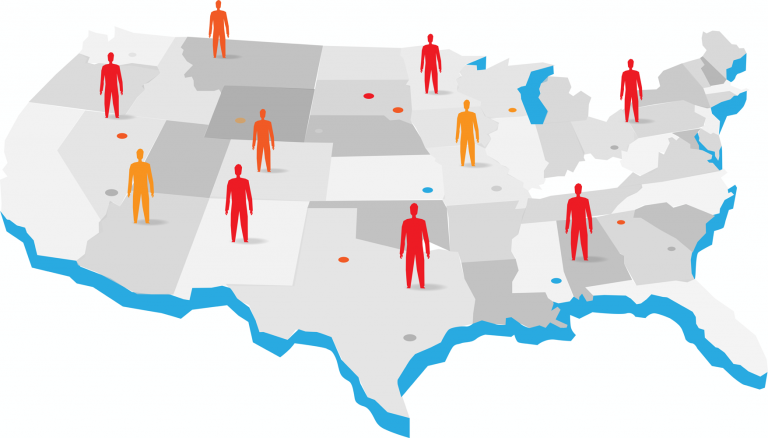
Employers need a clear and equitable relocation policy for workers who relocated during COVID – and who aren’t coming back.
By Hali Croner, President and CEO of The Croner Company
With the worst of the pandemic over, employers realize that many employees who moved during COVID aren’t returning. The result is a new class of employee – the permanent remote worker.
Our research reveals that 95% of companies participating in our industry-specific compensation surveys have employees with permanent remote work arrangements. For most, they comprise between 1% and 10% of the workforce.
Companies must now decide whether and how to apply geographic-based pay to these individuals. This strategy may impact employee turnover and the company’s ability to attract new talent. When making this decision, consider the following:
- Geographic-Based Pay Isn’t New
Many employers have long implemented geographic pay. As companies grew their footprints, they opened offices in lower-cost regions to save money. Employers paid prevailing salaries in the new locations to be competitive and attract talent. The pandemic, however, materially disrupted American work patterns. U.S. Census Bureau data reveal that the number of people working from home tripled from 5.7% (9 million people) in 2019 to 17.9% (27.6 million people) in 2021. Some of these new remote workers relocated to lower cost regions. However, uncertainties over whether they would return combined with tight labor conditions hindered companies from quickly articulating (and in some cases implementing) their location-based pay policies. - Most Companies Offer Geographic-Based Pay
“In an employer’s market, everyone would pay geographic differentials immediately.”
The majority of companies we track paid geographic differentials prior to the pandemic, and they intend to continue that practice. Generally, these companies offer four to five pay bands across the United States with roughly a 10% difference between them.
In an employer’s market, everyone would adjust salaries for geographic differentials immediately. But with competition for talent high, it is difficult to tell valued employees, who relocated during an unprecedented pandemic, that you are reducing their salary.
However, not implementing location-based pay can be costly. If your company is headquartered in a high cost of labor region and offers salaries competitive in that market, you are probably overpaying remote workers who relocated.
- Evaluate Geography and Its Impact on Pay Equity
Employers must also consider the values-based implications of pay rates. If you don’t adjust compensation upon relocation, you might be creating new inequities in some markets. For example, a permanent remote worker could accrue cost-of-living advantages – like the ability to afford a larger house. Such advantages are unfair to local employees in areas with a higher cost of living. Additionally, paying more than the prevailing market could potentially push salaries higher for everyone in that region, impacting local organizations. - Assess Your Markets for Pay Differentials
If you haven’t yet adopted geographic pay zones, consider the following actions:- Assess competitive pay rates by region
- Identify areas with pay differences of at least 10%
- Establish pay differentials for those zones.
If there is only a 2% or 3% geographic pay difference from your “core” location, consider using your existing pay ranges to accommodate workers in those areas.
- Consistently Implement Your Policy
Develop a clear relocation policy and apply it to everyone equitably. When you create a policy and consistently apply it, things get easier. Employees know that if they relocate, there will be a differential subtracted or added to pay. This approach helps prevent workers who relocate from considering pay cuts as punitive.“Develop a clear relocation policy and apply it to everyone equitably.”
With pay transparency now in place, employees will likely notice exceptions. Educate employees so they understand the policy and how it impacts relocations and new job postings.
Be transparent about geographic pay differentials when advertising jobs. Include language about how geographic differentials are applied to the published pay range. Specify whether the posting is tied to a specific location.
Finally, stay competitive by continually reviewing your pay zones. You may see regions creep up or down in pay as labor markets change.
The Croner Company Can Help
As your compensation advisory partners, our consulting team can develop a research-based, industry-specific geographic compensation policy that ensures your pay rates are competitive. We can develop a statement outlining your new policy and strategies for communicating with employees as part of your talent acquisition tools. We can also provide guidance on regional pay practices for specific industries and help build tools for HR, recruiters or employees to calculate geographic pay differentials.
The Croner Company’s surveys and consulting services are relied upon by organizations at all stages of growth to establish and modify pay practices and align compensation with mission, values and market.
- To discuss your company’s strategy for hybrid or remote-work compensation, or to learn more about our consulting services, please contact Lisa Dyakovski, Senior Consultant at the Croner Company, at (415) 485-5516 or lisa@croner.com.
- For more information about The Croner Company’s compensation surveys, please contact Laurie Krashanoff, Manager, Account Relations, at +(415) 485-5521 or laurie@croner.com.
Geographic-Based Pay: Is It Right for Your Company?
